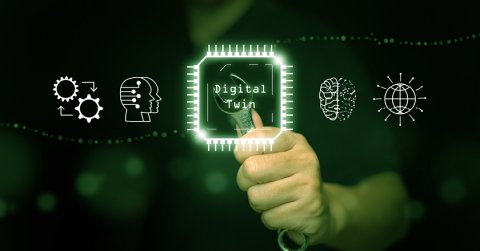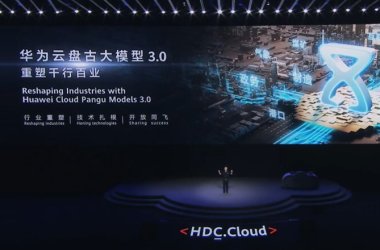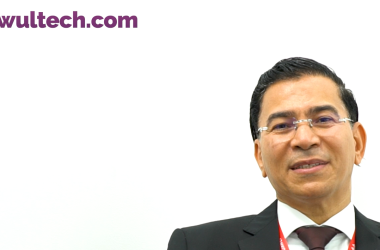 The boundary between the physical and the virtual seems to be blurring, with digital twins emerging as the new frontier of technological advancements. Comprehensive digital models of physical assets, processes or entire cities, digital twins are reshaping how industrial ecosystem in the Middle East designs, runs and maintains everything from factories to power grids and urban infrastructure. Continuously fed with real-time data, simulations, and analytics, the implications are faster with less downtime, and are becoming new models for resilience.
The boundary between the physical and the virtual seems to be blurring, with digital twins emerging as the new frontier of technological advancements. Comprehensive digital models of physical assets, processes or entire cities, digital twins are reshaping how industrial ecosystem in the Middle East designs, runs and maintains everything from factories to power grids and urban infrastructure. Continuously fed with real-time data, simulations, and analytics, the implications are faster with less downtime, and are becoming new models for resilience.
Driven by heavy investment in smart infrastructure and Industry 4.0 initiatives across the region, the Middle East & Africa digital twin market, valued at roughly US$518 million in 2023, is forecast to expand explosively, and expected to grow at a compound annual growth rate (CAGR) of 35.5% from 2023 to 2031, according to Business Market Insights report.
The Middle East’s ambitious projects such as Saudi Arabia’s NEOM, “The Line” vision and UAE’s push into the Metaverse are pioneering examples of city-scale virtual twins. These models use digital simulations by checking how a new transit corridor will impact congestion, simulate cloud seeding’s effect on urban humidity, and even emergency response scenarios. Informed by live, data-driven simulations, they evaluate the ‘what-if’ scenarios during the design stages. Similarly, Dubai’s Metaverse Strategy aims to accelerate the growth of virtual industries and is designed to create at least 40,000 additional virtual jobs and generate up to $4 billion for the city’s GDP by 2030, as per a PWC report. These initiatives are transforming the technology from a novelty into the central component of national economic strategy, addressing residents’ needs and environmental constraints with agility.
Healthcare and public services are also embracing digital twins. According to Grand View Research, hospitals in the Middle East and Africa region are adopting digital replicas of medical equipment that can support clinical decision-making, personalise treatment plans, especially in surgical planning and chronic-disease management, and optimise flow in emergency departments. Early pilot projects have shown promising results, reducing patient wait times by up to 15%.
Notably, Saudi Arabia has emerged as a leading contributor to healthcare digital twin adoption in the region as part of its Vision 2030 goals, reflecting both investment and scale. These applications are not futuristic: they are being trialled today to reduce wait times, lower operational waste, foster a personalized approach, and enhance clinical outcomes.
In the hyper-competitive manufacturing landscape, the narrative is being shifted from reactive maintenance to predictive operations as digital twin deployments enable optimised operations, reduced downtime, lower maintenance costs and extended asset life.
“As a result, companies report up to a 30% reduction in unplanned downtime and 25% faster changeovers, since anomalies are detected and resolved before they become failures.”
Thanks to predictive insights from their digital twin systems, in the Energy and Utilities sector, virtual replicas of pipelines, turbines, and grids forecast performance, maintenance needs, and environmental impacts, resulting in reduced corrective maintenance by 15% and extended equipment life by 20%. Smart-grids leverage use urban-scale twins to prevent overloads and grid failures during peak periods. Such improvements in system reliability translate into power-on time, cost savings, and better customer satisfaction.
Digital twins require massive, high-fidelity data; therefore, it is a good idea for organisations to invest in the ‘plumbing’, ubiquitous sensors to secure high-quality master data. Another challenge for digital twins is interoperability. Standards for interoperability are still evolving, and without them, the twin becomes an isolated silo. Moreover, if clear rules on data residency, model transparency and ethical use are laid out, it will accelerate trust and adoption of digital twins, resulting in predictive maintenance in manufacturing, grid balancing in utilities, or emergency-response simulation in cities.
For the Middle East, where decades of capital investment are shaping new urban and industrial landscapes, digital twins are a powerful tool for insight, agility, and resilience. If the region deploys visionary projects with intention, virtual replicas can catalyse more than operational efficiency that will not merely mirror reality—they will make it better. The adoption of digital twins is not just a technology wave; it is a strategic necessity for this region as it endeavours to diversify its economy and become a global leader in the digital world.
This opinion piece is authored by Esraa Khatab, Assistant Professor at School of Mathematical and Computer Sciences, Heriot-Watt University Dubai.





